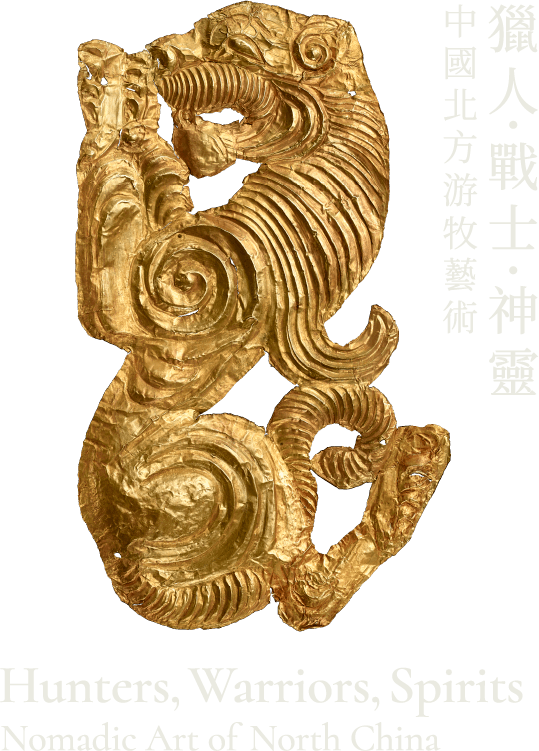Spiritual World
The nomads’ natural milieu is inhabited by spiritual beings, creating a pervasive sense of the sacred in everyday life. Worship of the sacred is organized through well-established sites, where rituals are performed: stone cairns on mountain tops (oboo), trees inhabited by powerful spirits (marked with colourful textiles), cliffs with ancient petroglyphs, natural springs with healing power, etc.
The sanctity of nature is extended to the animal kingdom. Certain animals connect the world of the living with other worlds, like the elk, eagle, swan, and wild duck. These animals serve as spiritual guides to the shamans—past and present—as they travel between worlds.
At the same time, the ancient nomads were uniquely aware of the precariousness of life. Buddhist teaching appealed to the ancient nomads’ deep-seated thirst for inner peace, and they were the first to install Buddhism as a state religion in China during the Northern and Southern dynasties.
Gandhara Maitreya Buddhist Sculpture
Schist2nd–3rd century C.E.
Hing Chao Collection
Guardian Figure
Wood, pigmentsLiao Dynasty (907–1125 C.E.)
Mengdiexuan Collection
Sculpture of Contemplative Bodhisattvas
MarbleNorthern Qi Dynasty (550-577 C.E.)
Inscription: Fourth month, tenth day of third year of Wuping
Mengdiexuan Collection
Ceremonial Pillow with Lotus Pattern
Gilt copperLiao Dynasty (907-1125 C.E.)
Mengdiexuan Collection
Bodhisattva Pendant
JadeLiao Dynasty (907-1125 C.E.)
Mengdiexuan Collection
Rectangular Plaque with Daoist Figures
Gilt silverLiao Dynasty (907-1125 C.E.)
Mengdiexuan Collection
Numinchen Shaman’s Robe
Concept: Hing Chao, Jeffrey Shaw, Sarah KenderdineDesign: Sjoerd Hoekstra
Source: Museum of Archeology and Anthropology, Cambridge
2022 / New Media Installation
Levitation
Bronze2011
Dashi Namdakov’s Art Foundation Collection
Memory of the Future
Bronze2001
Dashi Namdakov’s Art Foundation Collection



















